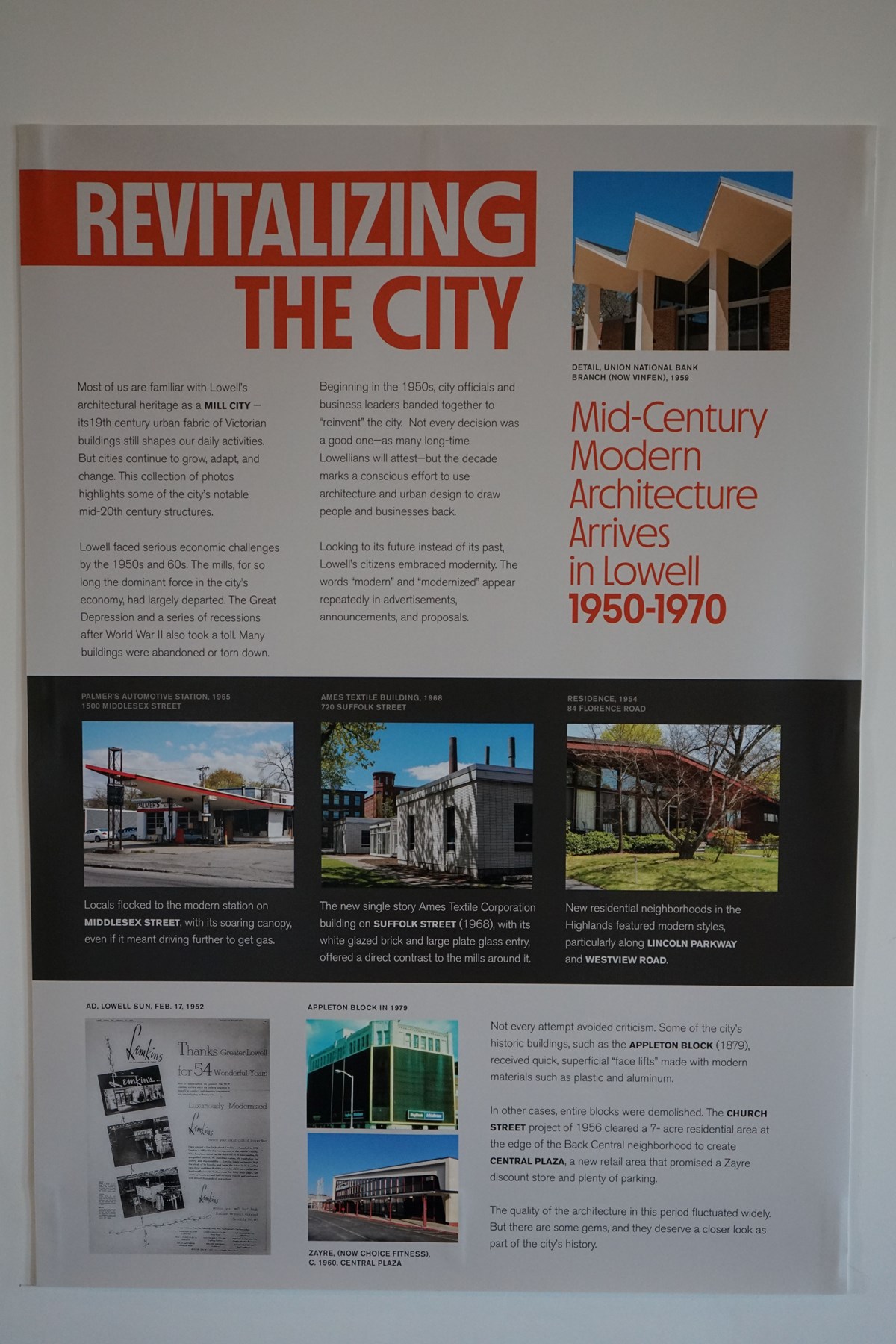Graphic Design Student and Professor Collaborate to Capture Images of the City’s History
 Image by Michael Page
Image by Michael Page
08/04/2023
By Marlon Pitter
Michael Page ’23 didn’t explore Lowell during much of his time as a graphic design student. That changed when he took on an Emerging Scholars project his senior year to create an exhibit about Lowell’s midcentury modern architecture, buildings designed from the 1950s through the 1960s, to document and preserve this era in the city’s history.
“I was able to explore with a purpose,” says Page, a Woburn, Massachusetts, native. “It felt nice to interact with and see these different buildings and see the city from a different perspective.”
Under the guidance of Architectural Studies Program Director Marie Frank, Page took hundreds of photos of several homes and commercial buildings in the downtown and Highlands neighborhoods during the fall and spring semesters. (The Emerging Scholars program pairs students and faculty in the College of Fine Arts, Humanities & Social Sciences to work on yearlong research-based projects.)
An avid photographer, Page knew it would take multiple trips to get the perfect shots for each building.

“We started in September, and we finished photographing in May toward the end of the semester,” he says. “We kept on going back and forth like, ‘No, we want a different shot where the lighting is different. Now it's a different season.’”
While Lowell is known for its historic mills from the Industrial Revolution, the resurgence of the city through its architecture can be traced back to the 1950s, according to Frank. Looking to recover from an economic downturn after World War II, and many vacant textile mills, the city altered its image, starting with the design of its buildings.
“It was a conscious attempt to use the architecture to show that Lowell had not died, that its history was not over, and that it was, in fact, going to be a city of the future,” she says.
Architect Eugene Weisberg, a Lowell native who studied at MIT, played a significant role in the development of Lowell’s midcentury modern build-out. The buildings featured large vertical glass windowpanes and cantilever roofs that extend horizontally over open spaces.
Weisberg’s work included Temple Beth-El on Princeton Boulevard and the Lowell Bank and Trust Co., now Santander Bank, on Merrimack Street. Downtown’s Mochinut and Choice Fitness in Central Plaza are similar examples of this work.

City of Lowell Historic Board Administrator Steve Stowell '86 and Middlesex North Register of Deeds Richard Howe, Jr. helped Page gather information on individual properties. Page combined those sources with research done at the Center for Lowell History to create the exhibit “Revitalizing the City: Mid-Century Modern Architecture Comes to Lowell,” while fellow graphic design student Josephine Parsons ’23 designed a poster and announcement card for the exhibit.
The photos were displayed on the fifth floor of Mill No. 5 in downtown Lowell from late June through July. Interest in Page’s work has spread to City Hall, where a gallery was installed in July and will be available through August, and the National Park Service.
“One of the reasons that City Hall and the National Park are interested is because Lowell’s bicentennial is coming up in 2026, and this topic of Lowell’s midcentury modern architecture is important in the overall history of Lowell,” Frank says. “The city didn’t end when the mills left. The city continued, and the people love the city.”
Page hopes his work will serve as a lasting reminder of an overlooked era in Lowell.
“The city is changing, and it’s important that these photos serve as history to show off Lowell’s rich urbanization, which has a lot of beautiful qualities that people might forget,” he says.
